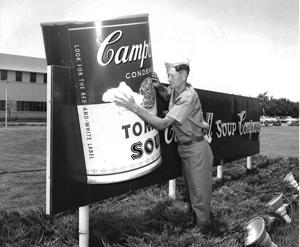SACRAMENTO — The Sacramento History Museum, nestled in the heart of the Old Sacramento Waterfront, proudly unveils its latest exhibition, “Sacramento in a Can — Featuring the Campbell’s Sacramento Story.” This captivating showcase delves into the rich history of the canning industry that once thrived in California’s capital. The exhibit, spread across two floors of the museum, will be open to the public until September 1.
On the first floor, visitors can explore the profound impact of the Campbell’s Sacramento Plant on the South Sacramento community through a collection of images, artifacts, and narratives. Ascending to the third floor, guests will discover the broader story of Sacramento’s cannery industry, which left an enduring cultural legacy marked by union struggles, family traditions, and the distinctive aroma of syrup and steam.
The Rise of Sacramento’s Canning Industry
For over a century, Sacramento was a formidable force in California’s canning industry. According to local historian Maryellen Burns, “Major companies such as Libby, McNeill & Libby; Bercut Richards; California Packing Corporation (later Del Monte) along with the California Almond Growers Exchange operated alongside smaller, family-run outfits.” These enterprises were bustling with seasonal activity, providing employment to thousands, particularly women and children from immigrant, Indigenous, and working-class backgrounds.
The announcement of the exhibit comes as a timely reminder of the city’s industrial past. Sacramento’s strategic position as Northern California’s rail and river transportation hub, coupled with its status as the region’s largest population center, made it an ideal location for canning operations. Historian William Burg notes, “Our canneries, including some of the largest in the nation, turned our region’s agricultural bounty into goods that could be shipped around the world, and provided employment for thousands of Sacramentans, principally women of color.”
Legacy and Cultural Impact
While most of the canneries have since disappeared or been repurposed, the memories of their heyday linger in the minds of many Sacramentans. The city, once dubbed the Tomato Soup capital of the world, was a hub of activity during harvest season. Workers would rush to process the bounty of vegetables, and the air was often filled with the scent of tomato soup.
The exhibit not only highlights the industrial achievements but also sheds light on the social dynamics of the time. The canneries were more than just places of employment; they were community centers where cultural exchanges took place and lifelong bonds were formed. The stories of those who worked in these factories are integral to understanding Sacramento’s diverse cultural tapestry.
Expert Insights and Historical Parallels
Reflecting on the broader implications of the canning industry, experts draw parallels between past and present economic landscapes. The canning industry’s reliance on a diverse workforce mirrors today’s discussions on labor rights and immigration. The historical struggles for better working conditions and fair wages resonate with contemporary movements advocating for equity and justice in the workplace.
Maryellen Burns emphasizes the importance of remembering these stories: “These plants pulsed with seasonal activity, employing thousands, especially women and children from immigrant, Indigenous and working-class communities.”
Looking Forward
As the Sacramento History Museum invites visitors to step back in time, the “Sacramento in a Can” exhibit serves as both a tribute and a lesson. It encourages reflection on how industries shape communities and the lasting effects they leave behind. For those eager to learn more about this pivotal era in Sacramento’s history, the exhibit offers a comprehensive and engaging experience.
For further details about the exhibit and to plan your visit, you can explore more at SacHistoryMuseum.org.
